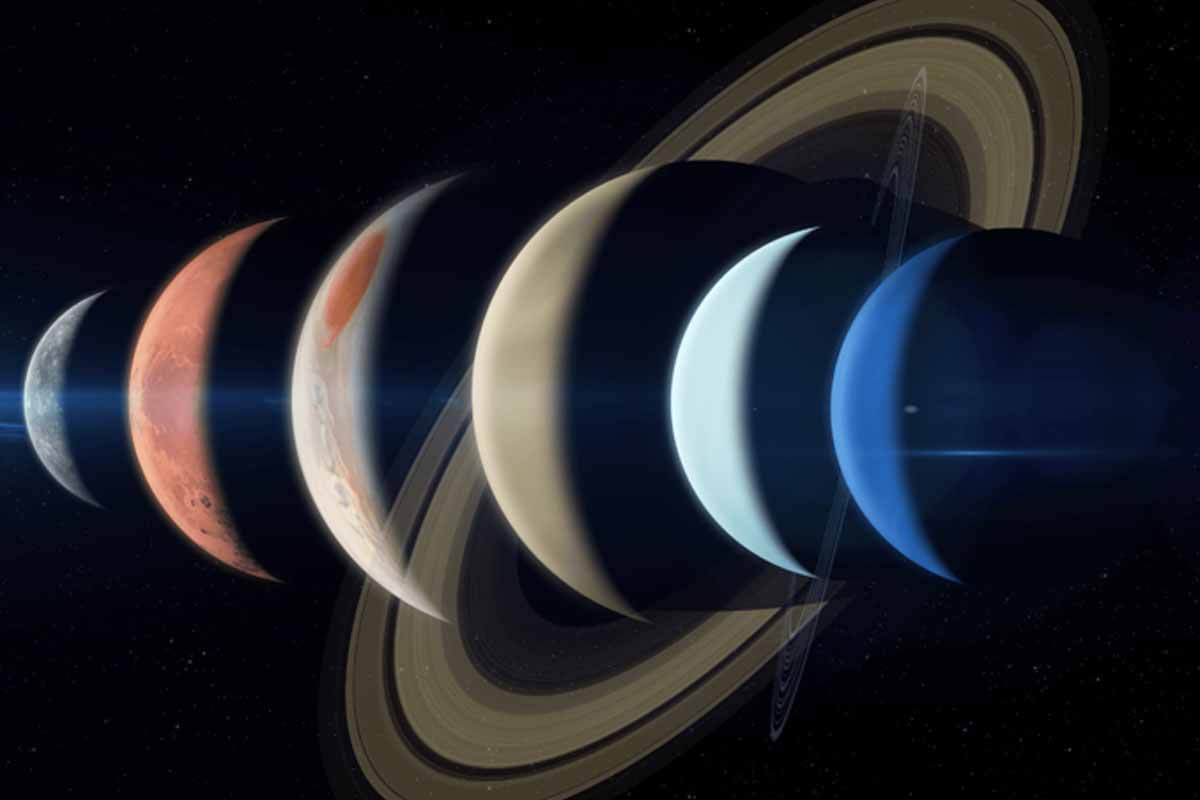Planet parade season comes with that hush before sunrise, when streets yawn and coffee isn’t ready. You step outside, breath fogging, and the air feels newly washed. A thin glow gathers in the east while birds test a few notes. The first bright point punches through, and your neck tips back without asking permission. Whatever kept you up last night can wait five minutes.
Planet parade
This weekend, September 26–28, 2025, the sky lines up a neat, five-world roll call. Give yourself an hour before sunrise. Face east. Venus sits low, a diamond on a dark velvet hem. Slide your gaze a little higher and right to meet Jupiter, steady and bold in the east-southeast. Now swing your attention across the dome to the west, where Saturn lingers, warm and golden, easing toward morning’s fade. Think of this planet parade as a slow, silent rehearsal before the lights come up. If you watched in August, you might remember Mercury tagging along. It’s dipped back into the Sun’s glare, shy for now. No rush—the show still sings.
Saturn, Jupiter, Venus: The Easy Wins
You don’t need gear for the brightest three. Venus takes the crown, blinding and pure. Jupiter follows, a calm lighthouse that anchors your eye. Saturn is subtler, honey-colored, unmistakably steady. Give Saturn a nod: it peaked at opposition on Sunday, September 21, so it’s holding a little extra glow. Neptune reached its own opposition on September 23. That bump helps it, though it remains a quiet neighbor. If you’re new to stargazing, let these three planets set your rhythm. Find a clear horizon, kill the porch light, and give your eyes ten minutes. Night vision isn’t dramatic. It just sneaks in. The planet parade rewards patience, not perfection. A lawn chair helps. So does a warm layer and a stubborn streak. You’re not chasing a once-in-a-lifetime thing. You’re letting the sky come to you, one breath at a time.
Uranus, Neptune, and a Darker Quest
Now for the fainter pair. Uranus and Neptune won’t crash your retinas. They ask for binoculars, maybe a small telescope, and a map on your phone. Both are well placed before dawn, riding high enough to escape the thickest haze near the horizon. Neptune hangs slightly above Saturn on the sky’s stage, the kind of detail that clicks once you see it. Swing the binoculars slowly. Pause. Let the specks settle. That tiny disk with a hint of blue? You found it. Uranus sits brighter than Neptune, still shy to the naked eye for most folks, yet pleasingly grabby in glass. Call it a quiet victory. The planet parade isn’t only about bright glamour. It’s also the joy of teasing out the subtle. A wink no one else on your block noticed this morning. If you need a push, remember this stretch of alignment won’t last. Through October the set begins to loosen and wander. That’s the deal we have with the sky—nothing holds still.
What Changes Next, and What Waits
This is the last broad gathering of worlds until October 2028, when another pre-sunrise lineup returns. That sounds far away. It is, and it isn’t. We count years by calendars; the heavens count them by loops and crossings. Keep this weekend flexible and grab any clear morning. If clouds win one day, try the next. The planet parade doesn’t care about your schedule, yet it keeps generous hours. Saturn rises at sunset and sets at sunrise, dragging the night like a lamp on a chain. Neptune shadows that path, a touch dimmer, still brighter than its usual whisper. Jupiter climbs earlier each day, Venus hugs the eastern edge, and the whole crew shifts by fingers of arc. Pay attention to color as well as placement. Venus burns white. Jupiter leans creamy. Saturn glows like aged brass. That palette is half the magic, and it won’t look exactly the same tomorrow.
Autumn Extras: Andromeda, Meteors, and Comets
Once you’ve had your fill, tilt to the northeast after dusk and meet the Andromeda Galaxy, M31. Under very dark skies it floats to the naked eye like a breath on glass, wider than the full Moon. City glow spoils that trick, yet binoculars rescue it. You’ll see a hazy oval, soft at the edges, ancient in every sense. Light left there 2.5 million years ago and just reached you tonight. October brings a few treats of its own. Watch for the full Harvest Moon on October 6 and 7, its rise fat and theatrical. Mark the Draconids for October 8; it’s a quirky shower that sometimes sputters, sometimes surprises. And keep an eye on the north as Comet Lemmon—C/2025 A6—slides closer, brightest around October 21, maybe visible to the naked eye, definitely in binoculars from about October 10. Another visitor, Comet SWAN R2, might join the party. Think of these as bonus tracks to the planet parade, a playlist you can stretch through fall. Keep your chair handy, your binos within reach, and your curiosity turned up. The sky rarely disappoints.
